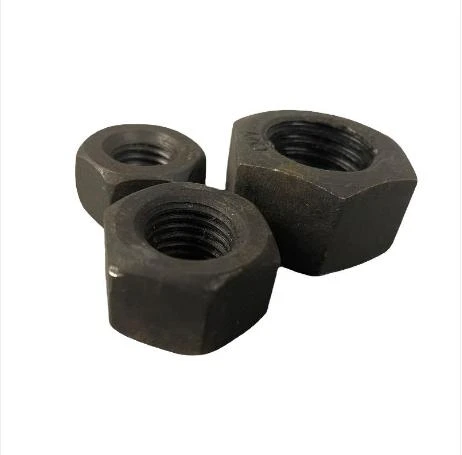

Understanding the Benefits and Applications of Self-Tapping Screws in Various Industries
Oct . 18, 2024 22:42 Back to list
Understanding the Benefits and Applications of Self-Tapping Screws in Various Industries
Understanding Self-Tapping Screws A Comprehensive Guide
Self-tapping screws are a crucial component in various construction and manufacturing applications, known for their ability to create their own mating thread in a material, eliminating the need for pre-drilled holes. This article will delve into the definition, types, applications, and advantages of self-tapping screws, providing a thorough understanding of this essential fastener.
Definition and Mechanism
Self-tapping screws are designed to tap their own hole as they are driven into the material. Unlike standard screws that require a pilot hole, self-tapping screws can cut into materials like metal, wood, or plastic. The action occurs through a sharp, pointed tip and threads that are designed to carve out a path, forming a secure connection with the base material. This unique feature not only speeds up the installation process but also makes them extremely versatile.
Types of Self-Tapping Screws
There are primarily two types of self-tapping screws thread-forming screws and thread-cutting screws.
1. Thread-Forming Screws As the name suggests, these screws create internal threads by deforming the material around them. They are typically used in softer materials such as plastic or thin sheet metal. The absence of chips during this process leads to a clean finish, making them ideal for applications where aesthetics and tight tolerances are crucial.
2. Thread-Cutting Screws Unlike thread-forming screws, thread-cutting screws remove material to create threads and generate chips in the process. They are better suited for harder materials like steel or other metals, where deformation is not an option. These screws often come with a sharpening at their tips to facilitate easier penetration into the material.
Applications
Self-tapping screws are incredibly versatile and find applications in various industries. They are widely used in
self type screw

- Construction Used for fastening framing and structural components. - Automotive Installed in vehicle assemblies, including body panels and engine components. - Electronics Secure components within devices, thanks to their ability to penetrate circuit boards and metal housings without damaging sensitive parts. - Furniture Assembly Commonly used in flat-pack furniture, allowing for quick and easy assembly.
Advantages of Self-Tapping Screws
The advantages of self-tapping screws make them a favorite among builders and manufacturers alike. Here are some key benefits
1. Time-Efficiency The ability to drive screws without pre-drilling saves significant time during installation, which can be critical in manufacturing processes or during construction.
2. Cost-Effective Eliminating the need for pre-drilled holes can reduce labor costs and the amount of materials needed on-site, making self-tapping screws an economical choice.
3. Strong Torques These screws provide excellent holding power, thanks to their design that allows them to anchor into materials securely.
4. Versatility Available in various materials, sizes, and coatings, self-tapping screws can be used in a wide range of applications across different industries, from lightweight tasks to heavy-duty projects.
5. Easy to Use With minimal tools required, self-tapping screws can be installed with just a power screwdriver or a manual driver, making them accessible for both professionals and DIY enthusiasts.
Conclusion
In conclusion, self-tapping screws are a fundamental element in modern construction and manufacturing, offering speed, efficiency, and versatility. Understanding their types, mechanisms, and applications can help in selecting the right screw for the right job. Whether you are a builder, manufacturer, or DIY enthusiast, incorporating self-tapping screws into your toolkit can significantly enhance your project outcomes. With their robust characteristics and ease of use, self-tapping screws will undoubtedly remain a staple in the fastener world for years to come.
Latest news
-
High-Strength Hot Dip Galvanized Bolts - Hebei Longze | Corrosion Resistance, Customization
NewsJul.30,2025
-
Hot Dip Galvanized Bolts-Hebei Longze|Corrosion Resistance&High Strength
NewsJul.30,2025
-
High-Strength Hot-Dip Galvanized Bolts-Hebei Longze|Corrosion Resistance&High Strength
NewsJul.30,2025
-
Hot Dip Galvanized Bolts-Hebei Longze|Corrosion Resistance&High Strength
NewsJul.30,2025
-
Hot Dip Galvanized Bolts - Hebei Longze | Corrosion Resistance, High Strength
NewsJul.30,2025
-
High-Strength Hot Dip Galvanized Bolts-Hebei Longze|Corrosion Resistance, Grade 8.8
NewsJul.30,2025

